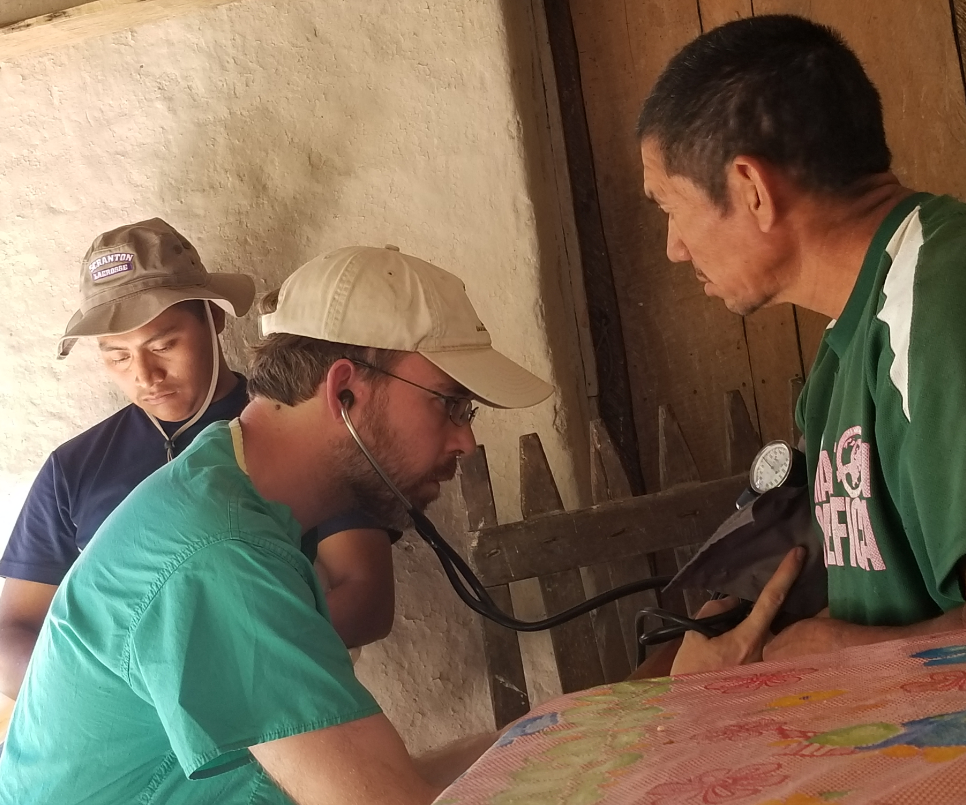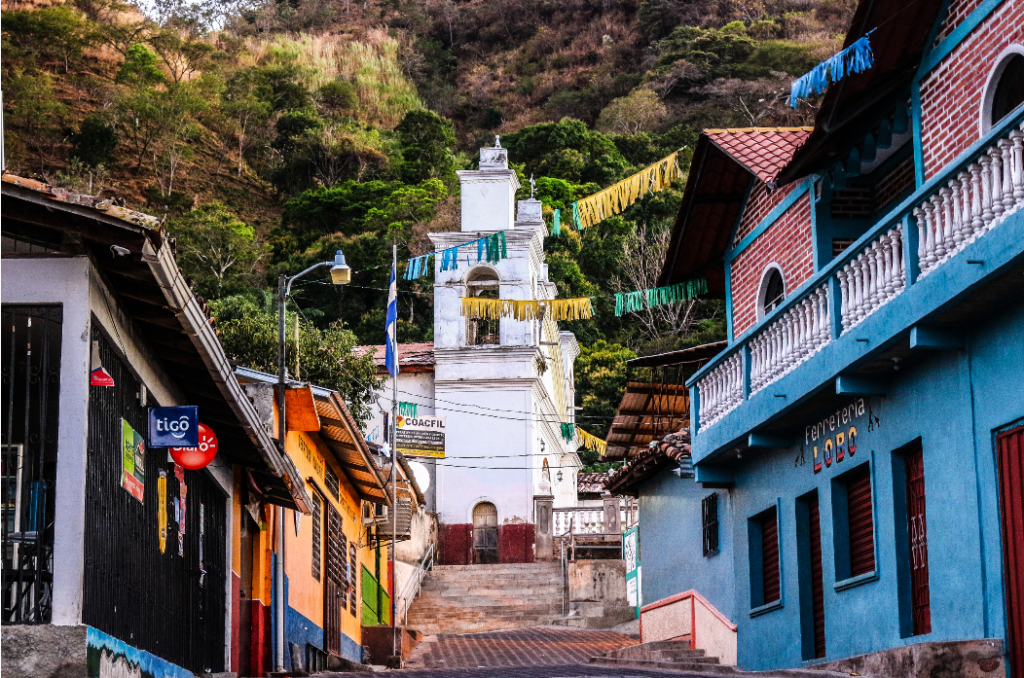Honduras: Are medical volunteers a resource or a curse in remote settings?
February 28, 2018 |
“Seems like for campesinos, going to the capital of Honduras would be a little like going to China.”
I am hiking through the mountains with Manuel, a Honduran health promotor, on our way to a home visit. He agrees: it’s two hours uphill on foot from here to the village of Camasca. Two hours more to the town of Esperanza. Then four hours to Tegucigalpa, the capital. Traveling from Toronto to Beijing would be about the same degree of time-consuming and expensive.
Not to mention culturally different. The capital of Honduras is big, loud, polluted, and dangerous without question – everything that Camasca is not. But where else will you find a cardiologist, or a psychiatrist, should you need one? With 23 doctors per 10000 people, Tegucigalpa has nearly the ratio recommended by the World Health Organization.

Honduras’ missing doctors
In contrast, the department of Intibucá (where Hombro a Hombro works) has only two doctors per 10000 people. Over 90% of Hondurans are uninsured, and rely on an overstretched Ministry of Health public system. Similar to the situation in Peru, the worker-funded Institute of Social Security and the private system function alongside the public system, for those with financial means. Meanwhile, spread throughout the rural parts of the country, over 1.5 million people have no access to care. It’s partly why Honduras is the second most frequented Latin American country for medical volunteers, with 87 organizations in our database.
Local partnership is one of the first things prospective volunteers should look for in a medical project abroad. Hombro a Hombro works directly with the Ministry of Health. In many ways, the Honduran government has ceded part of its territory to be administered by the NGO.
For example, the government provides partial funding, and gives Hombro a Hombro the jurisdiction to hire local physicians and staff as they see fit. When brigades arrive, they work directly within the Centro de Salud (Health Centre) in Camasca. The first stranger I meet on Camasca’s main avenue is familiar with Hombro a Hombro, nearly before the name escapes my mouth.

Putting in time in Camasca: a matter of perspective
Dr. Jassem is in the middle of his mandatory year of Servicio Social. Training a Honduran doctor is difficult and expensive, but when they finish training, local graduates are greeted with a 46% physician unemployment rate. Many migrate out of the country.
“It’s like you’ve wasted eight years of your life.”
He is open about the many social problems that exist within Honduras, from security to poverty. But I notice that the problems that his country has with convincing doctors to live and work in rural and remote areas are nearly identical to those in Canada.
A friend and partner of the Medical Service Trip initiative founded Bridge to Health several years ago. While they carry out medical service trips in Uganda, their new initiative aims to bring global health work home, to underserved indigenous communities in Canada. Why? In part because convincing city folks to leave their families to live semi-permanently in an isolated, remote, and culturally discordant area is no small feat. For some health workers, it is a recipe for unhappiness and burnout.
Servicio Social is hard for doctors like Jassem, whose roots are in Tegucigalpa. But convincing foreign medical volunteers to spend a short time in a charming mountainous rural setting, filled with rich opportunities for intercultural learning? Easier. Whether this is viewed as an opportunity, or slammed with the condescending voluntourism label is once more a matter of perspective.

Clinic day in Camasca
It’s clinic day, and I am with a family medicine resident, an undergraduate student, and Matt, a long term volunteer. We’re relaxed. We have all the time in the world. Everything is filled with novelty, and we are filled with genuine curiosity. Patients love that.
Our patient has hypertension, and when her appointment is finished, she smiles broadly and tells us how good we were. Much better than the others. She is effusive in her praise.
Matt cuts in as she’s speaking. It’s important to nip this in the bud. “They’re all great doctors. Everyone here is part of Hombro a Hombro.”
It is not the first time this type of comment has been made – a forcefully expressed preference for visiting North American volunteers over locals. The relationship between many Latin Americans and their own doctors is complex. Those involved describe a sometimes brusque, paternalistic approach, especially in the public system.
Have we undermined local healthcare workers without even trying? Why did this happen? And what do we do about it?
Register
Sign up for free to flag trips of interest and email organizations directly through our directory.
Comments
0 comments